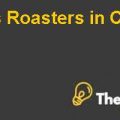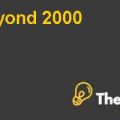QUESTION NO:1
CURRENT AFFAIRS OF CPK:
CPK has been operating in this industry since 1985. Larry Flax and Rick Rosen field created the first California Pizza in Beverley Hills, California. Since its start, it has played a dominating role within the industry. The company has been expanding across the state, country, and globe in their two past decades. As of the June 2006, the company had 213 locations in 28 states and 6 foreign countries. The CPK has three sources of earnings which are considered to be his major sources of growth and expansion, which are sales at company owned restaurants, royalties from franchised restaurants, and royalties from a partnership with Kraft Foods to sell CPK branded frozen pizzas in grocery stores.
The whole industry is classified into two groups of restaurants, one is full service and the other one is limited service restaurants. Currently CPK has 170 units of full service restaurants and analysts believe that this will expand further up to 500 units. The company has recorded revenue of over 6 million with a strong growth of over 5%. The comparison of their P/E ratios as compared to their closely related competitor, which is BJ’s Restaurants shows that the P/E ratio of CPK, which is around 31 as compared to their BJ’s restaurant’s P/E ratio which is 49. This shows that CPK is currently undervalued and it may attract many investors.
DECISIONS THAT SUSAN HAS TO FACE:
The current industry decline has created many challenges for the restaurants. This decline has challenged the industry with several problems like:
- Increasing food commodity prices;
- Higher labor costs (increased from $5.15 to $7.25);
- Deteriorating housing wealth;
- Softening demand due to high gas prices;
- Extreme interest shown by activist shareholders.
The above decline has also made its impact on the earnings of the CPK, which had declined in the past from $21000 in 2005 to $6000 in 2006 and it is also estimated that the impact will continue, if certain initiatives will not be taken to solve this problem. Despite of this, CPK is still in a better position than others. But this decline has made an impact upon the company’s share price. The share price shows a decline of 10% to $22.10. Currently CPK is a no leverage firm. The company now needs a significant expansion to over this problem and for this; they need $85million to finance that expansion. Now, Susan has to decide that how she will finance this expansion and choose the appropriate level of capital structure.
ALTERNATIVES AVAILABLE TO SUSAN:
The alternative available to Susan, in order to finance that expansion and also sustain their earnings and return on assets as well are the choice of debt level, which they have already taken into consideration and also shown its impact in the EXHIBIT. There are three debt levels that they have considered 10%, 20% and 30%. The second one is the repurchase or buy back their stock.
RECOMMENDATION:
As, the company’s current is not very much in a dangerous condition. Despite of this decline in this industry, they are fairly increasing their earnings after a decline and the growth of which has already recorded up to 5%. They are currently all equity financed and due to which their required return on equity will be too high. So, the decision of introducing debt and repurchasing their stock is looking more appropriate. The debt level should be 20% and the reason for this will be discussed below in the second question in detail.
QUESTION NO:2
HOW DOES DEBT ADD VALUE TO CPK?
The CPK’s management has decided to introduce debts and repurchase their stock. The debt is considered to be cheaper in a sense that it enables the user to avail tax benefit on the payment of the interest on these debts. The more the use of debt and the more the company can avail tax benefit. The cost of debt in this manner is considered cheap.Moreover, the introduction of the debts will result in an increase EPS as compared to the introduction of equity, in which the EPS declines and the cost of equity rises that put the pressure on the management’s shoulders. Due to this pressure, this forces them to take steps like doing creative accounting while on the other side of introducing debt; the EPS begins to incline due to the tax shield that the company availed on the interest payments. The introduction of the debt and repurchase of their stock also results in an increase ROE because now the earnings will spread out less equity....................
This is just a sample partial case solution. Please place the order on the website to order your own originally done case solution.













